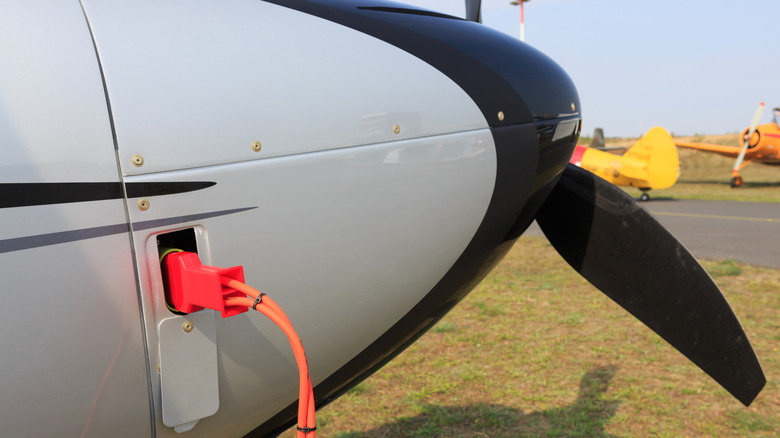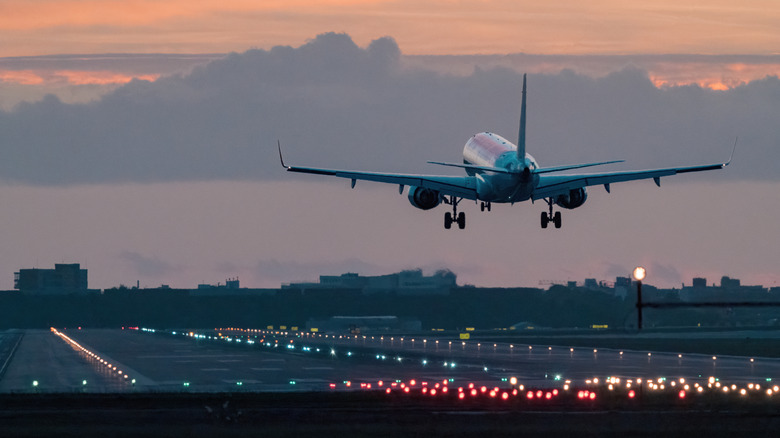Electric Passenger Planes May Be Coming To Your Local Airport: Here's What You Need To Know
Concerns about the environmental cost of air travel are reasonable, considering that commercial airplanes account for 2.4% of the world's carbon dioxide emissions — or 918 million metric tons per year — according to the International Council on Clean Transportation (ICCT). But, as Rick Steves noted in response to the phenomenon of "flight shaming," that doesn't mean people have to give up flying to stay climate-conscious. Some choose to offset their flight-related emissions by supporting climate-friendly causes, while others argue it's the responsibility of airlines and airports to take action. Chicago O'Hare International Airport, one of the busiest in the world, already went 100% carbon-free by switching to renewable energy. United Airlines was the first airline to adopt Chicago O'Hare's sustainable aviation fuel. Despite efforts like these to mitigate the harmful effect planes have on the environment, there's still no solution to the fact that planes generate emissions in the first place. That could change, though, with the development of all-electric passenger planes.
In 2024, air travel startup Elysian announced that it was engineering an electric passenger plane, the E9X, which is designed to carry up to 90 passengers. It's also expected to travel nearly 500 miles without needing to stop to recharge. With that range, you could travel from Boston to Washington, D.C. or from London to Amsterdam. The E9X would be powered by batteries, and, in addition to having a minimal environmental impact, it is projected to have the lowest operating cost among aircraft energy options. The benefits of these planes could be numerous: "You're not burning jet fuel. There's no carbon dioxide being produced. There's no air pollution near the airports that would affect those communities," Jayant Mukhopadhaya, a senior researcher at the ICCT, told ABC News.
When you could expect to fly in an electric passenger plane
As of this writing, Elysian expects to have its first E9X planes in service by 2033 and projects that by 2040, half of all global flights could be on battery-electric planes. It might seem a bit far-fetched to expect to be boarding an electric-powered aircraft in less than a decade, but, in defense of its plausibility, electric planes aren't an entirely new concept. They've already been in use, albeit on a much smaller scale. An existing electric aircraft, the CX300, designed by the Vermont-based company Beta, can fly up to 386 miles on a single charge. Its main limitation, however, is its size: The plane can only carry up to five passengers.
Carrying 90 passengers would require a much larger plane, and consequently, significantly more batteries. Powering an electric aircraft comparable in size to a Boeing 737, which could accommodate 90 passengers, about 35 tons of batteries would be needed, Jayant Mukhopadhaya told ABC News. Elysian is banking on a design that stores most of the battery weight in the wings, while keeping the body of the plane narrow. Another major challenge will be getting the plane certified and approved for commercial use. Making electric air travel the norm won't be as simple as retrofitting existing planes, but with at least one company having a hopeful outlook, electric flights could become a reality sooner than expected.

